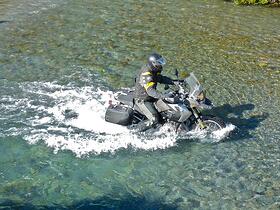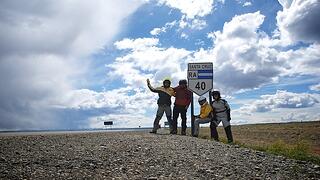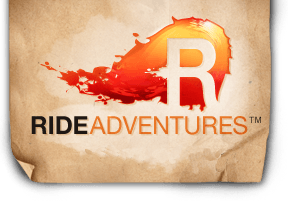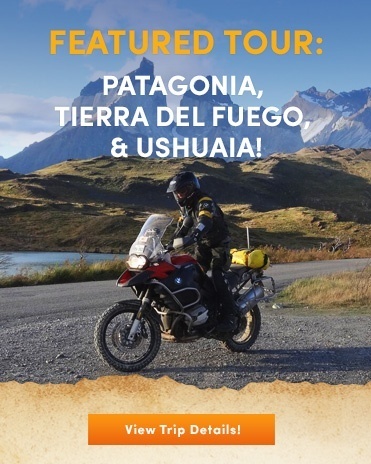 On this post, we've decided to share some questions and answers we're exchanging with customers about their upcoming Patagonia motorcycle trips and a) how to deal with the riding challenges or b) if motorcycle GPS is worthwhile.
On this post, we've decided to share some questions and answers we're exchanging with customers about their upcoming Patagonia motorcycle trips and a) how to deal with the riding challenges or b) if motorcycle GPS is worthwhile.
If riders are concerned about the Patagonia wind: It's only right to be so. The winds in certain sections of Ruta 40 in Argentina on the eastern side of the Andes Mountains can daily reach a steady 60mph. As for GPS? See more below, but we think it's barely worth your time or money in Patagonia and paper maps are far more valuable.
Question: We're a little concerned about the wind we've been reading about in Patagonia. How bad is it, and are we good enough riders to handle it?
Answer: Jeff, I actually wrote a blog post about this a few months ago trying to summarize the experience (see this link for the blog post.) Yes, the wind can be pretty vicious on typical days along Ruta 40 in Argentina; HOWEVER, any rider who takes the time to consider the situation with other vehicles, the effect that cross winds can have on a bike, and how important moderating their speed is should be just fine.
 Remember that leaning the bike to counter act against the wind means we're not on the "meatiest" part of the tire, and traction is lessened. Furthermore, leaning the bike into a side wind results in the bike essentially being 'lifted' a bit with increasing wind and/or bike speed because the wind is essentially forcing itself into a pocket on the low side of the bike. (The effect is enhanced in a similar way to how a headwind's effects increase as you increase your speed heading into such wind.) Of course when the bike is being 'lifted' at all, there's less weight on the tires, and less weight = less traction. Need we say more...
Remember that leaning the bike to counter act against the wind means we're not on the "meatiest" part of the tire, and traction is lessened. Furthermore, leaning the bike into a side wind results in the bike essentially being 'lifted' a bit with increasing wind and/or bike speed because the wind is essentially forcing itself into a pocket on the low side of the bike. (The effect is enhanced in a similar way to how a headwind's effects increase as you increase your speed heading into such wind.) Of course when the bike is being 'lifted' at all, there's less weight on the tires, and less weight = less traction. Need we say more...
The most important keys to making it through those windy sections in Patagonia are:
a) Moderate your speed. The faster the wind is going, the slower you have to go to minimize the effect of that "lifting & leaning" I just mentioned. If you arrive at your hotel at 7pm instead of 6pm...who cares...you arrived.
b) Pull over. Don't ever be ashamed of bringing it down to 1st or 2nd gear if need be to make sure oncoming or passing vehicles are kept as far away from you as possible. It's happened before where 2 careless drivers (1 motorcycle and 1 oncoming vehicle) have collided because of a sudden gust of wind that wasn't expected. Fortunately, the Ruta 40 has very little traffic, and you might not even see a car but every half hour or so. Still, it's this rarity that makes it perfectly reasonable to stop or slow WAY down and just make sure you pass each other safely.
Again, just being aware of all this and thoughtful about the situation tells me you'll be fine. I am far from a 'great rider,' and I've been through there plenty of times without issues.
Question: I've that GPS is important for motorcycle trips in Patagonia. Is this true?
Answer: In my opinion, GPS is barely useful there, and just one more thing you have to think about not leaving on the bike when you walk away for lunch, fuel, etc. The information available down there is nothing like what we have here in the U.S. (ie. Searching for "Fuel" on the GPS will get you nowhere.) The route guide we'll be sending once the hotels are set is far more valuable. Signage is actually quite good for major direction changes you'll need to make and GPS would just confuse things.


